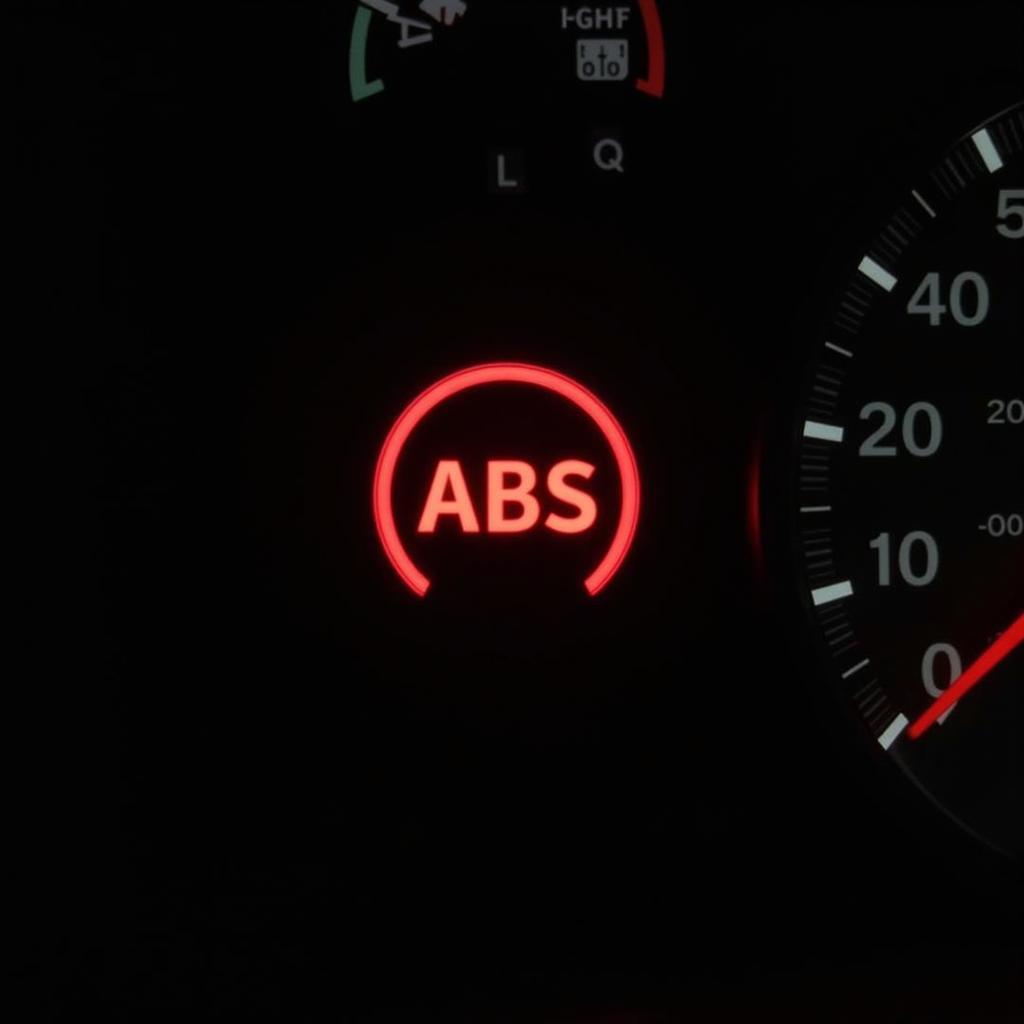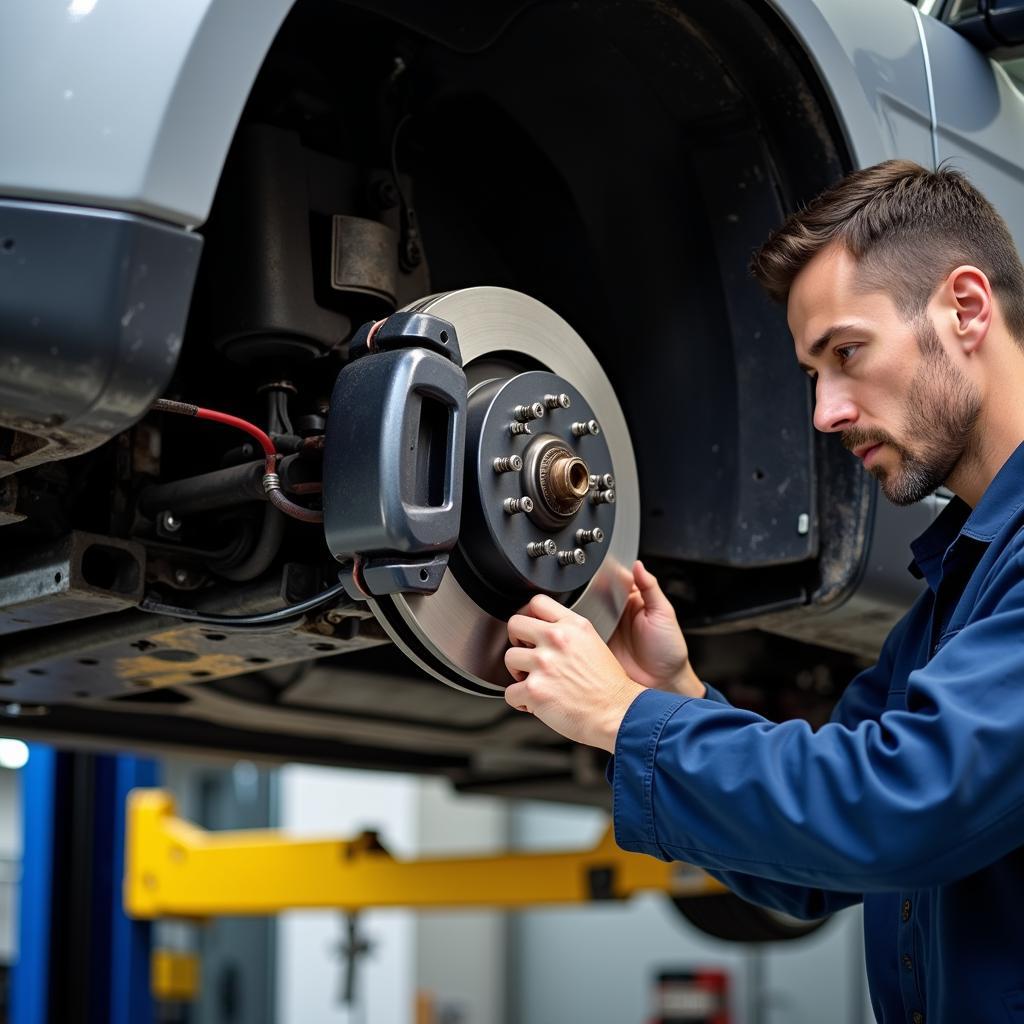Imagine cruising down the road, glancing at your dashboard, and suddenly a bright, ominous light catches your eye – a brake warning light. It’s a sight that can send a shiver down any driver’s spine. But before you hit the panic button, it’s crucial to understand that not all brake warning lights are created equal. While some indicate minor issues, others signal serious problems demanding immediate attention. This comprehensive guide will demystify the various car dashboard brake warning lights, explaining their meaning and guiding you on the appropriate actions to take.
Deciphering the Different Brake Warning Lights
Your car’s dashboard is like its communication hub, and brake warning lights are its way of telling you there’s something amiss with your braking system. Let’s break down the most common brake warning lights:
1. Brake System Warning Light
This light, often symbolized by a circle with an exclamation mark (!) inside or the word “BRAKE,” is a general warning indicator. It can signify a few different issues:
- Parking Brake Engaged: The most common reason for this light to illuminate is if your parking brake is engaged, even slightly. Double-check to ensure it’s fully released.
- Low Brake Fluid Level: A more serious issue is low brake fluid, which can severely compromise braking efficiency. If the light persists after disengaging the parking brake, it’s crucial to check your brake fluid level.
- Brake System Malfunction: In some cases, this light might point to a general malfunction within the braking system, such as a faulty sensor or a leak.
What to do: If you suspect low brake fluid or a system malfunction, it’s best to avoid driving and consult a qualified mechanic immediately.
 Low Brake Fluid Warning Light
Low Brake Fluid Warning Light
2. Anti-lock Brake System (ABS) Warning Light
Symbolized by “ABS” within a circle or enclosed by parentheses, this light indicates a problem with your Anti-lock Braking System. The ABS prevents wheel lock-up during hard braking, helping you maintain steering control.
- ABS Module or Sensor Issues: A malfunctioning ABS module or faulty wheel speed sensors can trigger this light.
- System Malfunction: The ABS light might also signal a general system malfunction, requiring a professional diagnosis.
What to do: While your regular brakes should still function, the ABS won’t engage if needed. It’s crucial to get your vehicle checked by a mechanic, especially if driving conditions are less than ideal (wet or icy roads).
 ABS Warning Light on Dashboard
ABS Warning Light on Dashboard
3. Electronic Brakeforce Distribution (EBD) Warning Light
Often displayed as “EBD” within a circle or alongside the ABS light, this warning signals a problem with the Electronic Brakeforce Distribution system. EBD works in conjunction with ABS to distribute braking force optimally between wheels, enhancing stability and control.
- Faulty Sensors or Module: Similar to ABS, problems with the EBD system usually stem from faulty sensors or a malfunctioning control module.
What to do: An illuminated EBD warning light often accompanies the ABS light. While your basic braking system remains functional, the lack of EBD and ABS compromises safety, especially during hard braking or on slippery surfaces. Seeking immediate mechanical attention is crucial.
Why are My Brake Warning Lights On? Common Causes
Several factors can lead to brake warning lights illuminating on your dashboard. Here are some common culprits:
- Worn Brake Pads: One of the most frequent reasons for brake warning lights, especially the general brake system light, is worn brake pads. Your car likely has a wear indicator that triggers the light when the pads reach a certain thinness.
- Brake Fluid Leak: A leak in the brake lines or hoses can lead to a drop in brake fluid level, activating the brake system warning light.
- Faulty ABS Sensors: Wheel speed sensors are vital for the ABS and EBD systems to function correctly. A malfunctioning sensor can disrupt these systems, triggering warning lights.
- Master Cylinder Issues: The master cylinder plays a critical role in converting your foot pressure on the brake pedal into hydraulic pressure that activates the brakes. Problems with the master cylinder can lead to various braking issues and warning lights.
- Electrical Faults: Like any other system in your vehicle, the braking system relies on electrical components. Wiring issues, blown fuses, or faulty sensors can disrupt the system and trigger warning lights.
 Mechanic Inspecting Brake System
Mechanic Inspecting Brake System
What to Do When Your Brake Warning Light Turns On
Seeing a brake warning light on your dashboard can be unnerving, but it’s crucial to remain calm and take appropriate action. Here’s a step-by-step guide:
- Assess the Situation: Identify which brake warning light is illuminated. This will give you a better idea of the potential issue.
- Pull Over Safely: If possible, safely guide your car to the side of the road or a safe location away from traffic.
- Check the Parking Brake: Ensure your parking brake is fully disengaged.
- Inspect Brake Fluid Level: If it’s safe to do so, carefully check your brake fluid level. If it’s low, adding brake fluid might temporarily address the issue, but it’s crucial to have a mechanic diagnose the underlying cause.
- Avoid Driving: Unless absolutely necessary, avoid driving your car when a brake warning light is on, especially if you suspect a serious issue.
- Contact a Qualified Mechanic: Schedule an appointment with a trusted mechanic to diagnose and repair the problem promptly. Explain the specific warning light and any symptoms you’ve noticed.
[2007 f150 brake warning light on](https://cardiagtech.com/2007-f150-brake-warning light-on/)
Ignoring Brake Warning Lights: A Risky Gamble
Your car’s braking system is critical for your safety and the safety of others on the road. Ignoring brake warning lights can have serious consequences:
- Reduced Braking Efficiency: Driving with a compromised braking system significantly reduces your ability to stop effectively, increasing the risk of accidents.
- Complete Brake Failure: In severe cases, ignoring warning signs can lead to complete brake failure, making your vehicle uncontrollable.
- Costly Repairs: What might start as a minor issue can escalate into a major and expensive repair if ignored for too long.
Expert Insight:
“Many drivers underestimate the importance of addressing brake warning lights promptly,” says John Smith, a seasoned automotive engineer with over 20 years of experience. “What might seem like a minor inconvenience can quickly turn into a dangerous situation. Regular maintenance and timely repairs are crucial for ensuring a safe and reliable braking system.”
Brake Warning Lights: Your Call to Action
Car dashboard brake warning lights are not to be taken lightly. They serve as crucial indicators of potential problems within your vehicle’s braking system, a system paramount to your safety on the road. By understanding the meaning of these warning lights and responding promptly, you prioritize your safety and contribute to a safer driving environment for everyone. Remember, a quick response can save you from costly repairs and potentially dangerous situations down the line.
